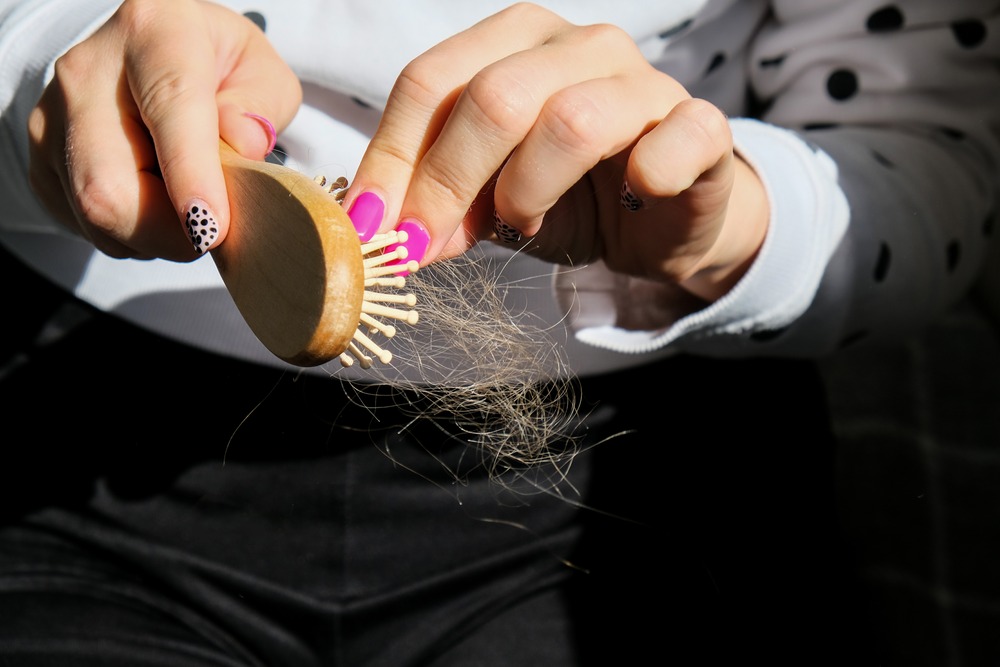
Hair shedding and hair loss are two common conditions that can affect the health and appearance of your hair. Although they often have similar symptoms, understanding the differences between these conditions is important for proper treatment and prevention.
It’s important to know the difference between hair shedding and hair loss because they require different treatments. Hair shedding is usually a natural process that occurs as part of the hair growth cycle, while hair loss can be caused by medical conditions or certain lifestyle factors.
To provide a comprehensive understanding of Hair Shedding vs. Hair Loss, we have meticulously crafted an insightful guide. Utilize this invaluable resource to effortlessly grasp the distinctions and nuances between these two prevalent hair conditions, paving the way for informed and effective hair care.
3 Stages of the Hair Growth Cycle
The normal hair cycle has three distinct stages – anagen, catagen, and telogen.
- Anagen stage. Also known as the “growth” stage, new hairs are produced in the follicle and they begin to grow outward.
- Catagen stage. In a transitional phase, the growth slows down as the follicles shrink and the shaft of the hair detaches from the root.
- Telogen phase. In the resting stage, your hair stops growing leading to hair falling when you brush or wash it.
Hair Shedding Vs. Hair Loss
Hair shedding is a natural process that occurs as part of the hair growth cycle. When we are in the shedding phase, our scalp sheds dead hair to make room for new regrowth. Hair loss, on the other hand, is an abnormal condition that occurs when the hair follicles shrink and stop producing new strands of hair.
Although these terms may be used interchangeably in everyday conversation, they actually refer to distinct concepts.
What is Hair Shedding?

Hair shedding is when you lose more hair than normal. It’s a natural part of the hair growth cycle and typically occurs when new hairs replace old or damaged ones. Most people will experience some degree of shedding every day as an average person sheds about 50-100 strands every day.
What’s the Normal Hair-Shedding Process?
The normal hair-shedding process is often referred to as the telogen phase, where old hair sheds and is replaced by new ones. This phase usually lasts for 3 to 4 months, but it can vary depending on individual physiology. During this time, an average person may lose anywhere from 50-100 strands of hair every day, which is considered normal.
Factors that can affect hair shedding
There are various factors that can affect hair shedding, including age, hormones, diet, and overall health.
Age
This is a major contributing factor as the body’s natural production of hormones slows down with age.
Hormones
Hormonal fluctuations caused by puberty or menopause can also lead to an increase in hair fall or shedding.
Diet
A poor diet can also cause hair to shed more than normal as the body is not getting the necessary nutrients it needs to maintain healthy hair growth.
Overall Health
Overall health is another important factor that can affect shedding. Things like stress, lack of sleep, smoking, and certain medical conditions can all lead to an increase in hair shedding.
What triggers excessive hair shedding?
If you’re losing more than 100 strands of hair a day, it may be an indication that something is wrong. In this case, there are various factors that can trigger excessive shedding such as:
- stress
- weight loss
- illness
- change in diet
- hormonal contraceptive
- iron deficiency
- seasonal changes
What is Hair Loss?

Hair loss, on the other hand, is when you lose more hair than what is considered normal. This can be caused by a variety of factors, including medical conditions, genetics, and certain lifestyle habits such as over-styling or using harsh chemicals on the hair.
How Much Hair Loss Is Normal?
If you’re losing more than 100 strands of hair a day, it could be an indication that something is wrong. This can happen due to any number of issues from stress to medical conditions or genetics. It’s important to seek professional advice if your shedding persists over several weeks.
Types of Hair Loss
There are various types of hair loss, including:
1. Male and Female Baldness
This pattern baldness is the most common form of hair loss. It’s caused by a combination of genetics and hormones, resulting in a gradual hair thinning.
2. Traction Alopecia
Traction alopecia is caused by tension on the hair follicles, typically from tight hairstyles or chemical treatments that damage the follicle.
3. Alopecia Areata
Alopecia areata is an autoimmune disorder where the body’s immune system mistakenly attacks the hair follicles, resulting in patches of baldness.
Signs and Symptoms of Hair Loss
The symptoms and signs of hair loss vary from person to person, but the most common is thinning hair, receding hairline, or bald patches.
Causes of Hair Loss
The causes of hair loss can be complex and vary from person to person. Common causes include genetics, hormones, medical conditions, certain medications, stress and lifestyle habits such as over-styling or using harsh chemicals on the hair.
Genetics
Genetics is a major contributing factor to hair loss, as it can be passed down from generation to generation.
Hormones
Hormonal imbalances caused by pregnancy, menopause, or thyroid issues can also cause hair loss.
Medical Conditions
Certain medical conditions such as lupus, alopecia areata, and thyroid disease can cause hair loss.
Medications
Certain medications such as those used for cancer treatment or high blood pressure can also lead to hair loss.
Stress
Stress is a major contributor to hair loss and thinning. Stress triggers the release of hormones that can interfere with the normal hair growth cycle.
Lifestyle Habits
Lifestyle habits such as over-styling with heat or chemical treatments, or using products containing harsh chemicals can cause permanent damage to the hair follicles and lead to hair loss.
7 Steps to Prevent Hair Shedding and Hair Loss
There are a few steps you can take if you don’t want to experience excessive hair shedding and hair loss, such as:
- Eat a healthy diet rich in vitamins and minerals
- Manage stress levels with regular exercise or meditation
- Use gentle shampoo and conditioner designed for your hair type
- Avoid products containing harsh chemicals
- Limit the use of heat styling tools and chemical treatments
- Visit your doctor to identify any underlying medical conditions
- Take supplements specifically formulated for hair health
Conclusion
Excessive hair shedding and hair loss can be caused by various factors, including genetics, hormones, medical conditions, certain medications, stress, and lifestyle habits. There are a few steps you can take to prevent excessive shedding and hair loss such as eating a healthy diet, managing stress levels, using gentle shampoo and conditioner, avoiding harsh chemicals, and limiting heat styling.
It is also important to maintain healthy hair by using gentle products, eating a balanced diet, and protecting your hair from environmental damage. If you are experiencing excessive shedding or hair loss, it is best to seek medical help.
Moreover, consider visiting Vitamins Revive today and get special treatments with natural ingredients to prevent hair loss and stimulate healthy hair growth. We have the best solutions for your hair problems!









